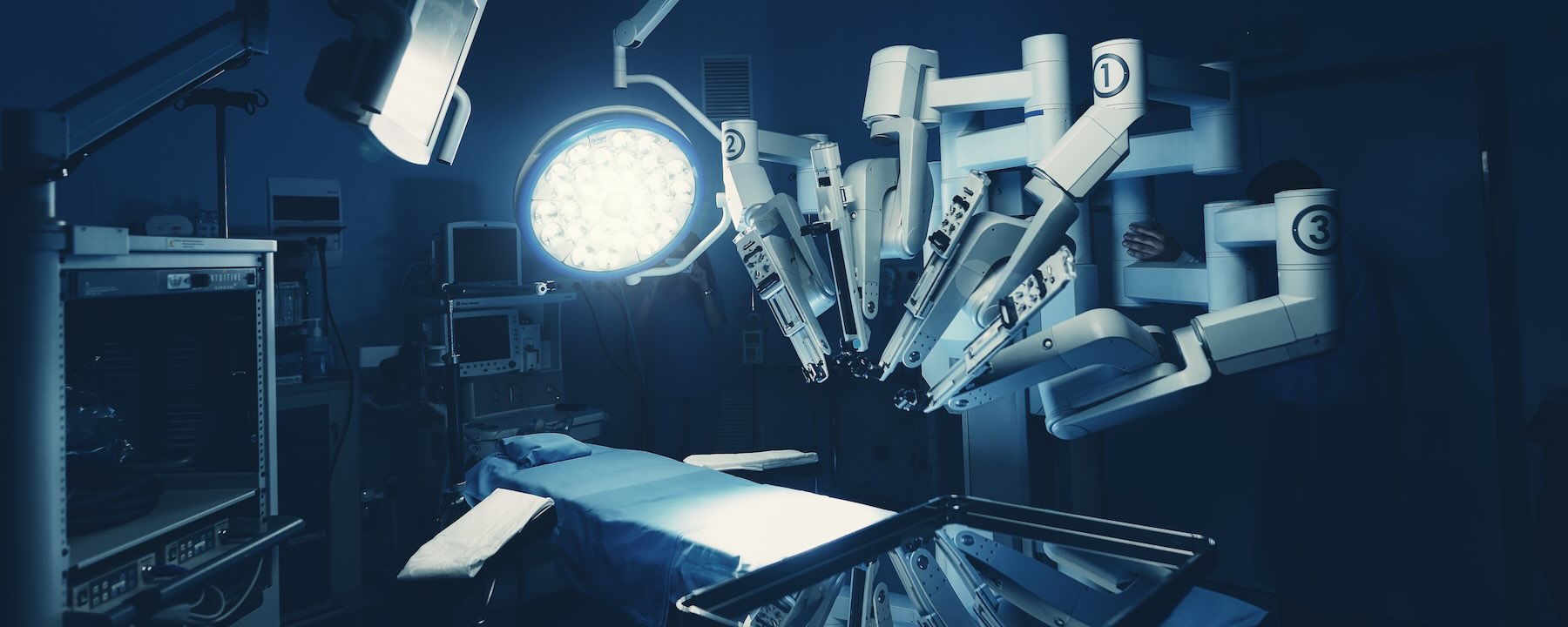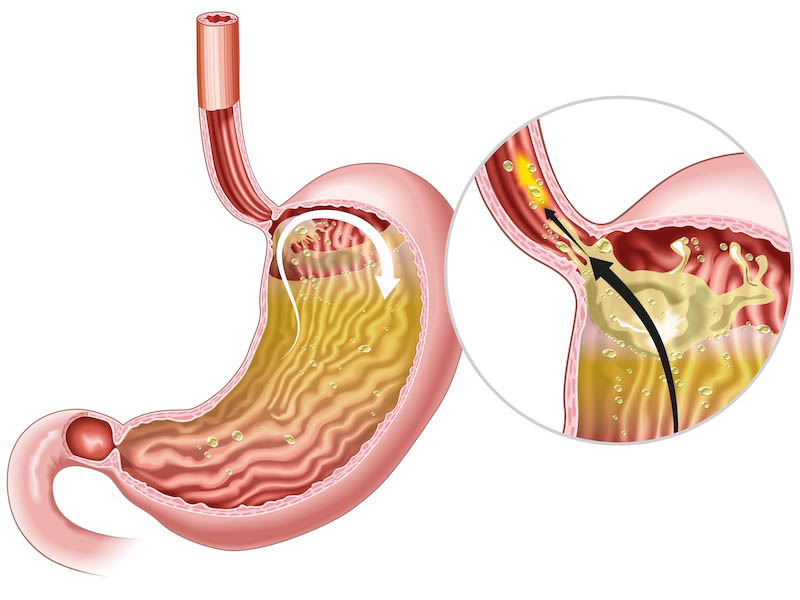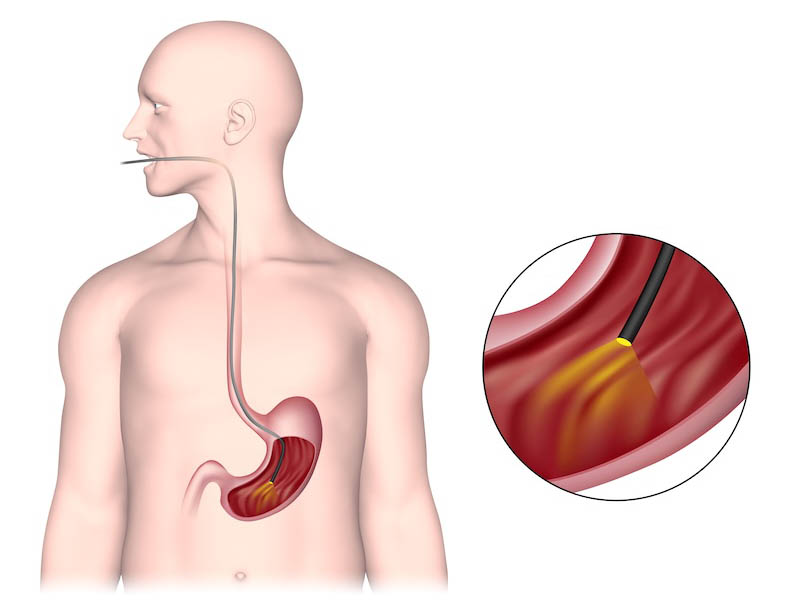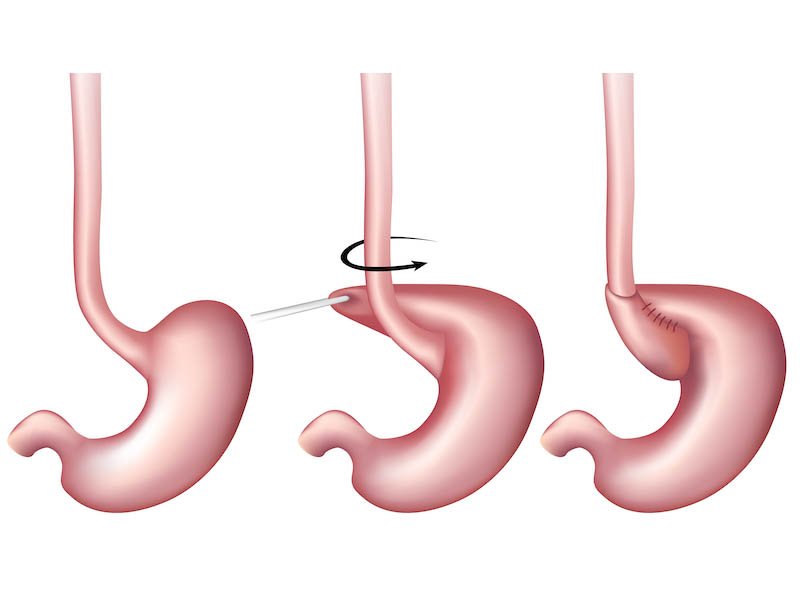
Reflux (GERD) Treatment and Surgery
About The Stomach
The stomach also makes gastric juice which is the main mechanism by which food is digested. The juice is made up of many things including hydrochloric acid (a strong acid that breaks down food and other foreign materials) and pepsin (an enzyme used to digest protein). Because of the highly caustic nature of the acid the stomach protects itself with an inner lining against the acid so that the stomach itself doesn’t get digested. The stomach also has barriers within it to prevent acid from moving up into the esophagus (lower esophageal sphincter) and into the first portion of the intestines known as the duodenum (pyloric sphincter).

Causes of GERD
The main reason for GERD is due to structural abnormality of the lower esophageal sphincter allowing for the pressure in the stomach to be higher than the sphincter itself allowing for gastric juice to enter into the esophagus. This can happen as a result of hiatal hernias and obesity. Additionally, reflux can take place when there is higher than required acid within the stomach. This can happen as a result of Zollinger- Ellison syndrome or high blood calcium levels. Long-term damage to the inside lining of the stomach can cause symptoms of burning chest pain, belching, bad breath, hoarse voice, sore throat and chronic cough. More importantly, this chronic damage can cause changes to the lining of the esophagus that can sometimes lead to esophageal cancers.

Initial Treatment: Medications
Today, the mainstay of treatment requires acid suppression with medicines such as proton pump inhibitors (ex:prilosec, prevacid, nexium, protonix), H2 receptor blockers (zantac (now recalled), pepcid, tagamet). Esophagogastroduodenoscopy (EGD) is commonly performed to monitor for changes in the esophagus and sometimes involves biopsies as well.

Testing Before GERD Surgery
Surgical treatment for this condition is reserved in patients with hiatal hernias and those in whom medical management has failed or can not take medications long-term. Some testing is required prior to surgery to understand your anatomy and physiology prior to intervention.
These tests may include an upper GI study (x-ray with oral contrast to look at the particular anatomy), pH probe testing (determining if acid is refluxing into the esophagus), esophageal monometry (looking at the contractions of the esophagus), EGD (determining anatomy and also assessing esophageal lining damage).

Laparoscopic Fundoplication Surgery
Once surgery is decided upon the procedure is performed laparoscopically. The procedure is known as a Laparoscopic Nissen Fundoplicaton. The tenets of the surgery required reducing an hernia that may exist at the esophageal hiatus (where the esophagus enters the upper portion of the abdomen) and re-creating a new esophageal sphincter.
This is done by taking the upper curve of the stomach and wrapping it around the stomach. It is then sewn into place so that the lower portion of the esophagus passes through a small tunnel of stomach muscle. This is thought to reduce the amount of acid backing up into the esophagus and allows the inside lining of the esophagus to heal. When performed laparoscopically patients will stay in the hospital up to two nights. They are discharged home on a pureed diet that is ultimately advanced to a soft diet.




